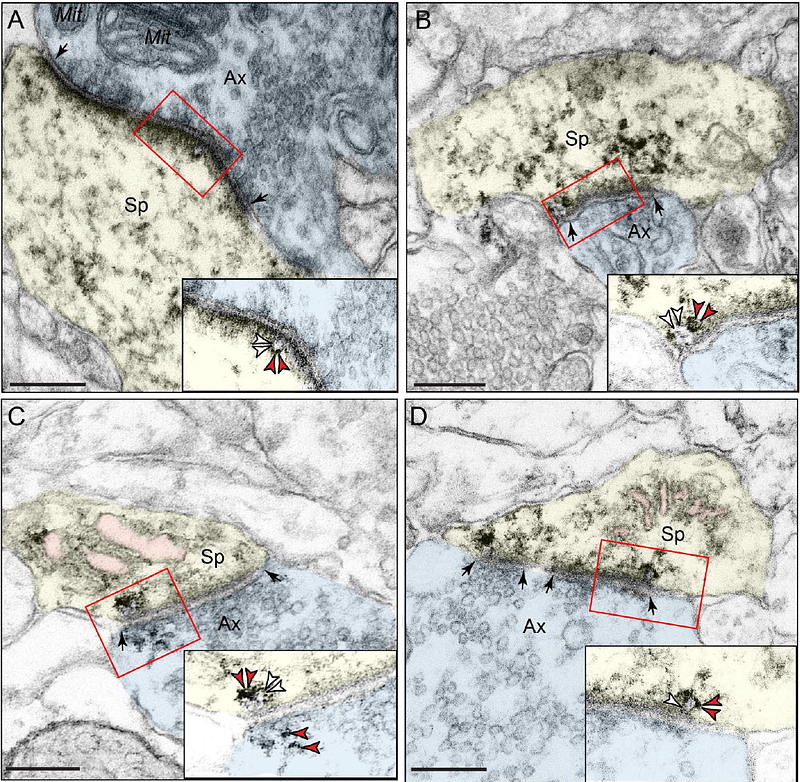Nanoscale imaging of pT217-tau in aged rhesus macaque entorhinal and dorsolateral prefrontal cortex: Evidence of interneuronal trafficking and early-stage neurodegeneration

Nanoscale imaging of pT217-tau in aged rhesus macaque entorhinal and dorsolateral prefrontal cortex: Evidence of interneuronal trafficking and early-stage neurodegeneration
Datta, D.; Perone, I.; Wijegunawardana, D.; Liang, F.; Morozov, Y. M.; Arellano, J.; Duque, A.; Xie, Z.; van Dyck, C. H.; Arnsten, A. F.
AbstractINTRODUCTION: pT217-tau is a novel fluid-based biomarker that predicts onset of Alzheimers disease (AD) symptoms, but little is known about how pT217-tau arises in brain, as soluble pT217-tau is dephosphorylated postmortem in humans. METHODS: We utilized multi-label immunofluorescence and immunoelectron-microscopy to examine the subcellular localization of early-stage pT217-tau in entorhinal and prefrontal cortices of aged macaques with naturally-occurring tau pathology and assayed pT217-tau levels in plasma. RESULTS: pT217-tau was aggregated on microtubules within dendrites exhibiting early signs of degeneration, including autophagic vacuoles. It was also seen trafficking between excitatory neurons within synapses on spines, where it was exposed to the extracellular space, and thus accessible to CSF/blood. Plasma pT217-tau levels increased across the age-span and thus can serve as a biomarker in macaques. DISCUSSION: These data help to explain why pT217-tau predicts degeneration in AD and how it gains access to CSF and plasma to serve as a fluid biomarker.